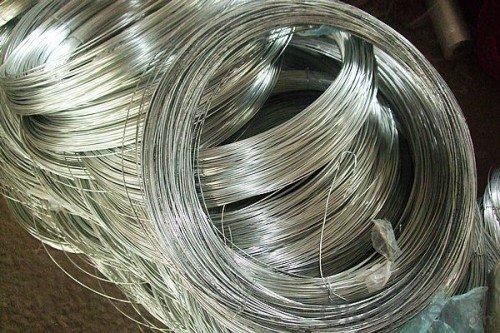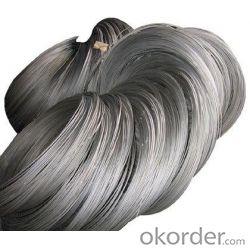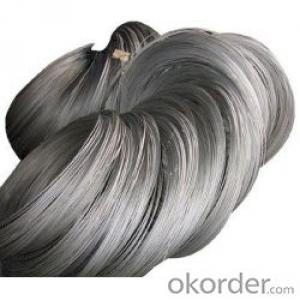Hot Rolled Steel Bar in Coil 6.5-10mm Reinforcing Steel
- Loading Port:
- Tianjin
- Payment Terms:
- TT OR LC
- Min Order Qty:
- 100 m.t.
- Supply Capability:
- 5000 m.t./month
OKorder Service Pledge
OKorder Financial Service
You Might Also Like
Hot Rolled Steel Bar in Coil 6.5-10mm Reinforcing Steel
Main Structure of Steel Bar in Coil 6.5-10mm
Model Number: 6.5-10mm
Application: Construction Material
Type: steel rod price
Size: 6.5mm-10mm
Technique: hot rolled
Packing: in coil
Chemical Composition: C, Si, Mn, P, S, (B)(Cr)
Shape: round
Specification for Steel Bar in Coil 6.5-10mm
Type | Deformed Steel Bar/ Hot Rolled Ribbed Bar/ Steel Rebar |
Standard grade | GB ( HRB 400/ HRB500) BS4449-1997(460B) BS4449-2005(B500B) KS SD400/500
ASTM A 615 (GR40/GR60) |
Shape | Ribbed bars |
Quality | Prime quality |
Technique | Hot rolled |
Size of diameter | 5.5-40mm, as requested |
Length | 6~12m, as requested |
Delivery time | 10-30 days, according to the quantity |
Note | Customized service is available (for diameter, length and chemical components etc.). |
Advantages of us
1. More than 10 years experience in this industry
2. 100,000 tons exporting per month
3. Professional foreign trade tea
4. OEM&ODM capacity
5. High quality assured & competitive price
6. Try our best to meet your needs & save your budget
7. Very popular in Southeast Asia, Africa, Mid-East and South America etc.
8. VIP membership system, first time customers and long-term cooperation customers can get extra discount on some products.
FAQ:
Q:What's your service:
A:
1. Offer customers 24/7 service, whenever you need us, we are always here for you.
2. Immediate response. Your any inquiry will be replied within 24 hours.
3. Support small order quantity. For the first time cooperation customers, we can send you less quantity for trial order.
4. Support third party inspection company to inspect and check quality and quantity before delivery.
Picture:


- Q:How are steel coils different from steel sheets?
- Steel coils and steel sheets are both made from the same material, which is steel. However, they differ in terms of their shape and size. Steel coils are long, continuous rolls of steel, usually wound up in a coil form, while steel sheets are flat, rectangular pieces of steel. The main difference lies in their applications - steel coils are commonly used in industries where large quantities of steel are required for manufacturing processes, such as automotive or construction, whereas steel sheets are often used for smaller-scale projects or as a raw material for further processing.
- Q:Is steel harder than iron or is iron harder than steel?Please explain... and help!Thanks
- steel is harder than iron Iron is a chemical element. It is a strong, hard, heavy gray metal. It is found in meteorites. Iron is also found combined in many mineral compounds in the earth's crust. Iron rusts easily and can be magnetized and is strongly attracted to magnets. It is used to make many things such as gates and railings. Iron is also used to make steel, an even harder and tougher metal compound. Steel is formed by treating molten (melted) iron with intense heat and mixing it (alloying) with carbon. Steel is used to make machines, cars, tools, knives, and many other things.
- Q:What are the different types of steel coil packaging techniques?
- In the industry, there are various steel coil packaging techniques commonly used. These techniques aim to safeguard the steel coils throughout storage, transportation, and handling, ensuring their arrival in excellent condition. One technique utilized is called "eye-to-the-sky" packaging, where the steel coils are vertically stacked with the coil's eye facing upward. They are then secured using steel strapping or banding. This method is commonly employed for smaller coils and effectively shields against damage caused by handling and transportation. Another typical packaging technique is "eye-to-the-wall" packaging. Here, the steel coils are horizontally stacked with the coil's eye facing the wall. They are also secured using steel strapping or banding. This particular method is often used for larger coils and provides enhanced stability during transportation. "Shrink-wrapping" is a third packaging technique wherein the steel coils are tightly wrapped in plastic shrink-wrap material. This offers protection against moisture, dust, and other contaminants. Shrink-wrapping is especially useful when steel coils need to be stored or transported outdoors or in harsh environments. Moreover, certain steel coil packaging techniques involve the usage of wooden pallets or skids. The coils are placed on these pallets or skids, which provide a stable base and enable easy handling using forklifts or other equipment. Additionally, the coils can be secured to the pallets or skids using steel strapping or banding. Ultimately, the selection of a steel coil packaging technique depends on factors like coil size, transportation requirements, and environmental conditions. By choosing the appropriate packaging technique, steel coils can be adequately protected and delivered to their destination without any damage or deterioration.
- Q:Hi, does anyone know where i can find more about this topic ? fire resistant steels for structural applications. thanks
- Steel okorder /
- Q:I know that mild steel is more brittle than cast iron....but that is all.......please help??Thank you in advance......Ruby:D
- Actually, the opposite is true. CAST IRON is generally brittle, while mild steel is not. Cast iron has a carbon content from about 2%-4%. Mild steel has less than one tenth as much carbon as cast iron- around 0.2% - 0.3%. Cast iron also typically has from 1%-3% silicon. Most mild steel contains no more than 0.3% silicon. Steel melts at ~1450 degrees C. The addition of large amounts of carbon and silicon to C.I. lower the melting point to around 1200 C and make it more fluid than molten steel. Obviously this makes it easier to melt and to pour. The main advantage of cast iron is it's cheap to produce. It also has some desirable properties despite it's brittleness. For example it's easy to cut and carve with machine tools. It's also very heat resistant and excellent at absorbing vibration. For this reason C.I. was commonly used for engine blocks and exhaust manifolds in cars and trucks in the past, (Cast aluminum engine blocks are more common these days because Al is much lighter and conducts heat better.) Cast iron also rusts much more slowly than steel which is why it's still commonly used for pipes. C.I. pipes have been known to last 300 years.
- Q:How are steel coils used in the production of steel doors?
- Steel coils are used in the production of steel doors as they provide the raw material required for the door manufacturing process. These coils are unwound and then cut into specific lengths to form the door panels. The steel coils are further processed through various steps, such as rolling, pressing, and shaping, to give the door its desired structure and design. Thus, steel coils serve as the foundation for creating sturdy and durable steel doors.
- Q:What is the weight of a standard steel coil?
- The weight of a standard steel coil can vary depending on its size and thickness. However, a typical range for a standard steel coil is between 5,000 to 10,000 pounds (2,268 to 4,536 kilograms).
- Q:How are steel coils used in the manufacturing of electrical wiring?
- Steel coils are used in the manufacturing of electrical wiring to provide strength and support to the wiring. The steel coils are typically used as a core or reinforcement within the wiring to enhance its durability and prevent it from bending or breaking easily.
- Q:How many percent carbon in low alloy steel and high alloy steel
- Steel is basically an alloy of iron and carbon that has more than 0% carbon and less than 2% carbon. The alloy of carbon and iron with more than 2% carbon is considered cast iron. The bessemer process converts cast iron to steel by injecting oxygen into molter cast iron to burn off the excess carbon. Steel is also modified by adding additional elements like silicon, molydenum, vanadium, chrome, etc.
- Q:How do steel coils impact the environment?
- Steel coils can have both positive and negative impacts on the environment. On one hand, the production of steel coils requires significant amounts of energy and emits greenhouse gases, contributing to climate change. Additionally, the extraction of raw materials for steel production can lead to deforestation and habitat destruction. On the other hand, steel is highly recyclable, reducing the need for new steel production and saving energy and resources. Proper waste management and recycling practices can mitigate the negative environmental impacts of steel coils.
1. Manufacturer Overview |
|
|---|---|
| Location | |
| Year Established | |
| Annual Output Value | |
| Main Markets | |
| Company Certifications | |
2. Manufacturer Certificates |
|
|---|---|
| a) Certification Name | |
| Range | |
| Reference | |
| Validity Period | |
3. Manufacturer Capability |
|
|---|---|
| a)Trade Capacity | |
| Nearest Port | |
| Export Percentage | |
| No.of Employees in Trade Department | |
| Language Spoken: | |
| b)Factory Information | |
| Factory Size: | |
| No. of Production Lines | |
| Contract Manufacturing | |
| Product Price Range | |
Send your message to us
Hot Rolled Steel Bar in Coil 6.5-10mm Reinforcing Steel
- Loading Port:
- Tianjin
- Payment Terms:
- TT OR LC
- Min Order Qty:
- 100 m.t.
- Supply Capability:
- 5000 m.t./month
OKorder Service Pledge
OKorder Financial Service
Similar products
New products
Hot products
Related keywords





























